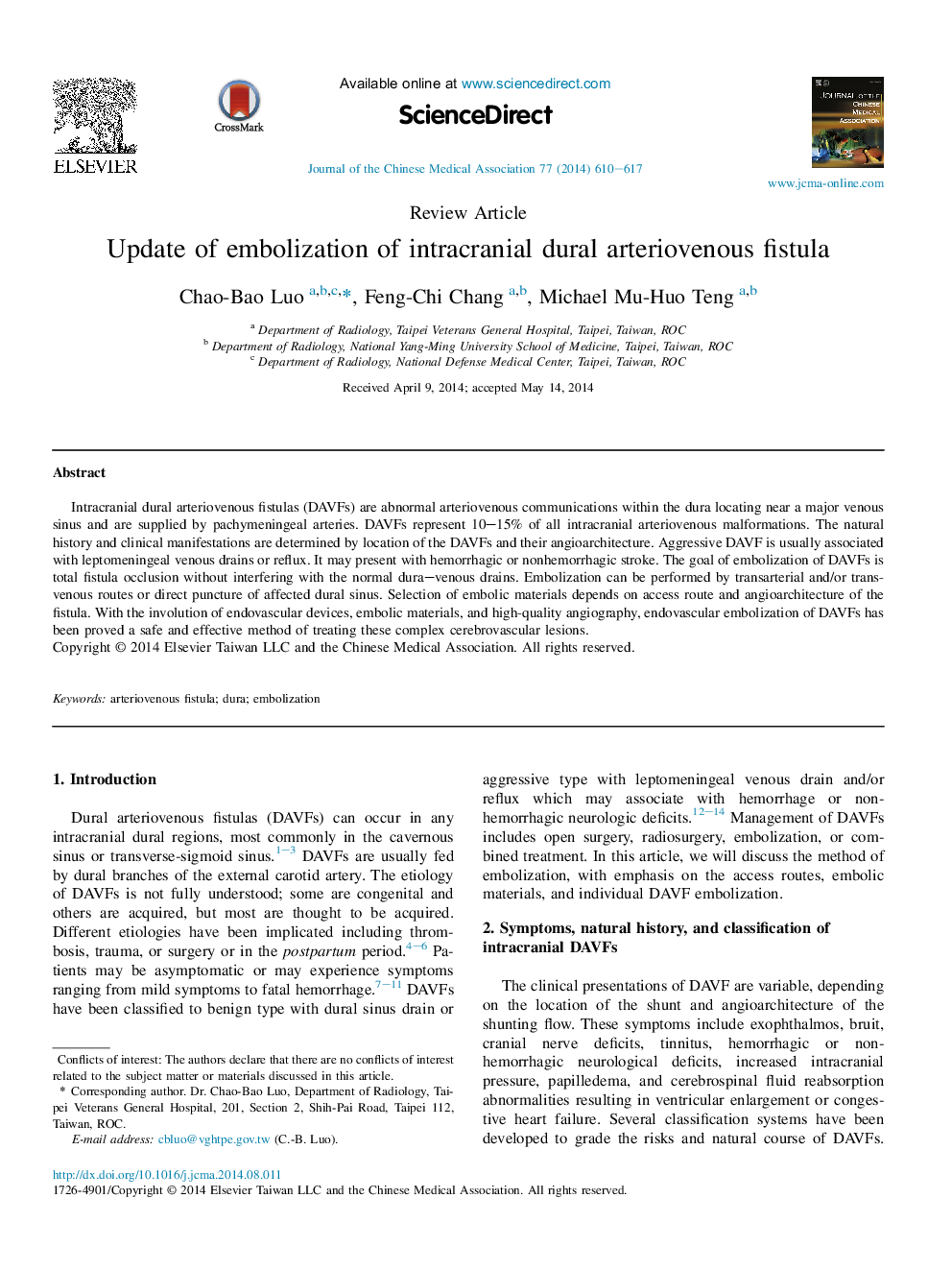| Article ID | Journal | Published Year | Pages | File Type |
|---|---|---|---|---|
| 3475892 | Journal of the Chinese Medical Association | 2014 | 8 Pages |
Intracranial dural arteriovenous fistulas (DAVFs) are abnormal arteriovenous communications within the dura locating near a major venous sinus and are supplied by pachymeningeal arteries. DAVFs represent 10–15% of all intracranial arteriovenous malformations. The natural history and clinical manifestations are determined by location of the DAVFs and their angioarchitecture. Aggressive DAVF is usually associated with leptomeningeal venous drains or reflux. It may present with hemorrhagic or nonhemorrhagic stroke. The goal of embolization of DAVFs is total fistula occlusion without interfering with the normal dura–venous drains. Embolization can be performed by transarterial and/or transvenous routes or direct puncture of affected dural sinus. Selection of embolic materials depends on access route and angioarchitecture of the fistula. With the involution of endovascular devices, embolic materials, and high-quality angiography, endovascular embolization of DAVFs has been proved a safe and effective method of treating these complex cerebrovascular lesions.
